After six days on the wall, we stand on the summit. Finally! It is June 24, shortly after 7 p.m. The sun is still high on the horizon. Exhausted but happy. We don't have to climb any higher! At least for a moment, the feeling of tension disappears and is replaced by the much-desired feeling of satisfaction and relief. We haven't eaten for two days. I hide the last energy bar in my jacket as a small relief from hunger. But we still have to descend!
Denali, one of the Seven Summits, the highest peaks of each continent on our planet. It is not that high (6,194 meters), but its elevation from the base of the mountain exceeds even Everest itself. At the same time, the conditions here are among the harshest in the world. Extreme cold, wind, snow. This makes Denali a real challenge. Normally, this mountain is climbed via the so-called normal route, i.e. the West Buttress. However, our goal was the south face, specifically the Cassin Ridge, which is one of the most difficult routes. Every year, around 1,000 people attempt to climb Denali, and this year was no different. However, only 1% of them attempt the wall itself. Interestingly, this year, 35% of all those who attempted Denali were successful.
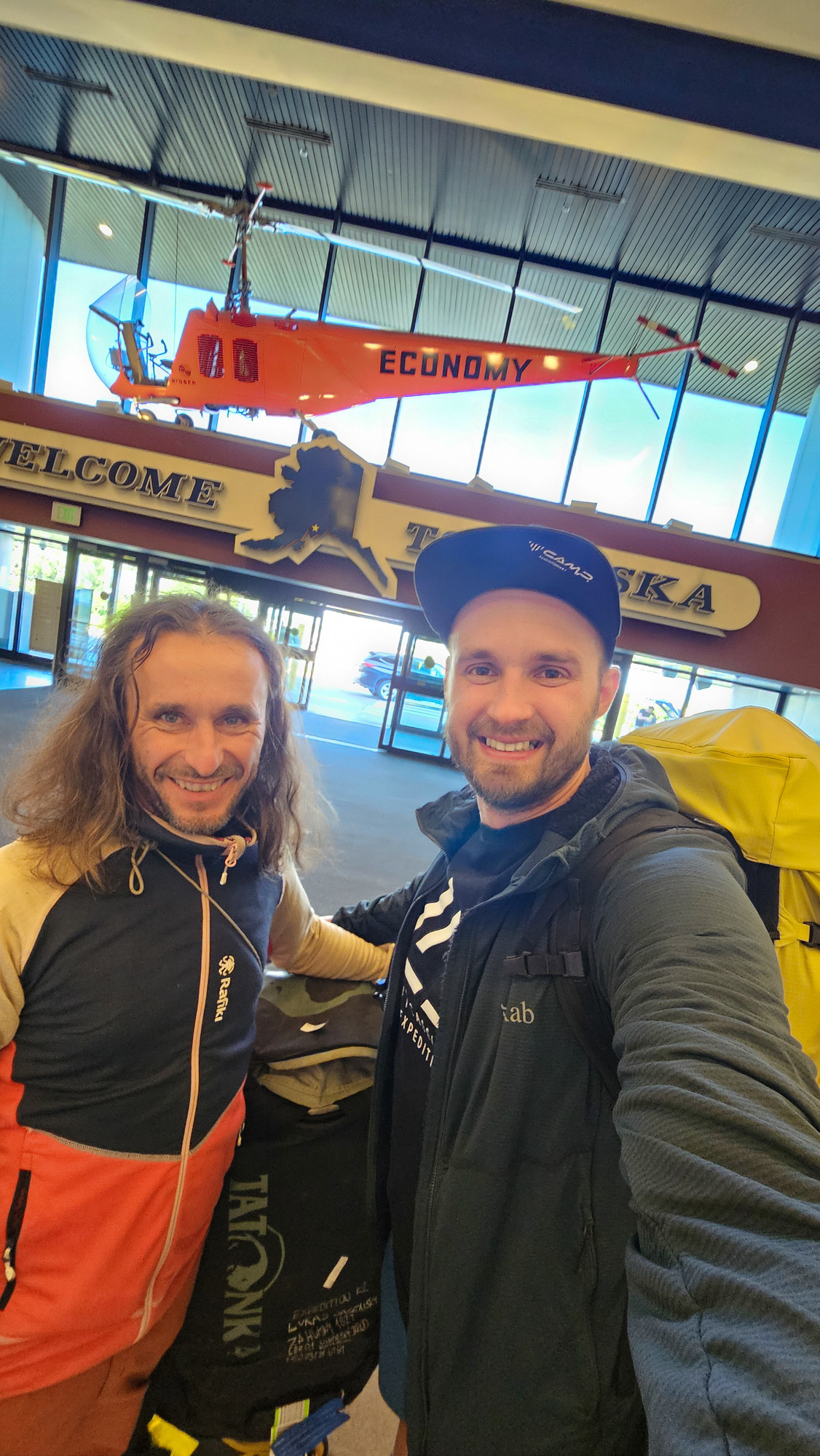
Denali and its rugged face... That was last year.
We attempted Denali last year. Unsuccessfully. In May, when the weather should have been most stable, the conditions were perhaps the worst I have ever experienced. Extremely low temperatures, strong winds, and snowfall. Only three days of good weather during the entire period. It was impossible to even get to the wall, let alone climb it. All we could do was gaze at the wall of clouds, from behind which the south face occasionally emerged. And so Denali clearly showed us how inhospitable the environment here can be.
We will return...
I didn't expect it to be this year. After last year, I thought we would take a break from this hill. The chances of success are not great, but winter is. However, fate had other plans, so at the beginning of June, we packed our things and set off for Alaska again. Hopefully a little wiser from last year. This time, we decided to postpone the expedition until the second half of June. We believed this could be the right move. We are definitely taking more warm equipment and food with us. It was clear that I would also have to change my climbing equipment. Specifically, the ropes. It was time to choose, and I couldn't reach for anything other than Tendon ropes. I was interested in the weight, packability, and the associated diameter and durability of the ropes. I was clear on this – Tendon Master PRO 7.6 ropes, i.e., half ropes in bright green and orange.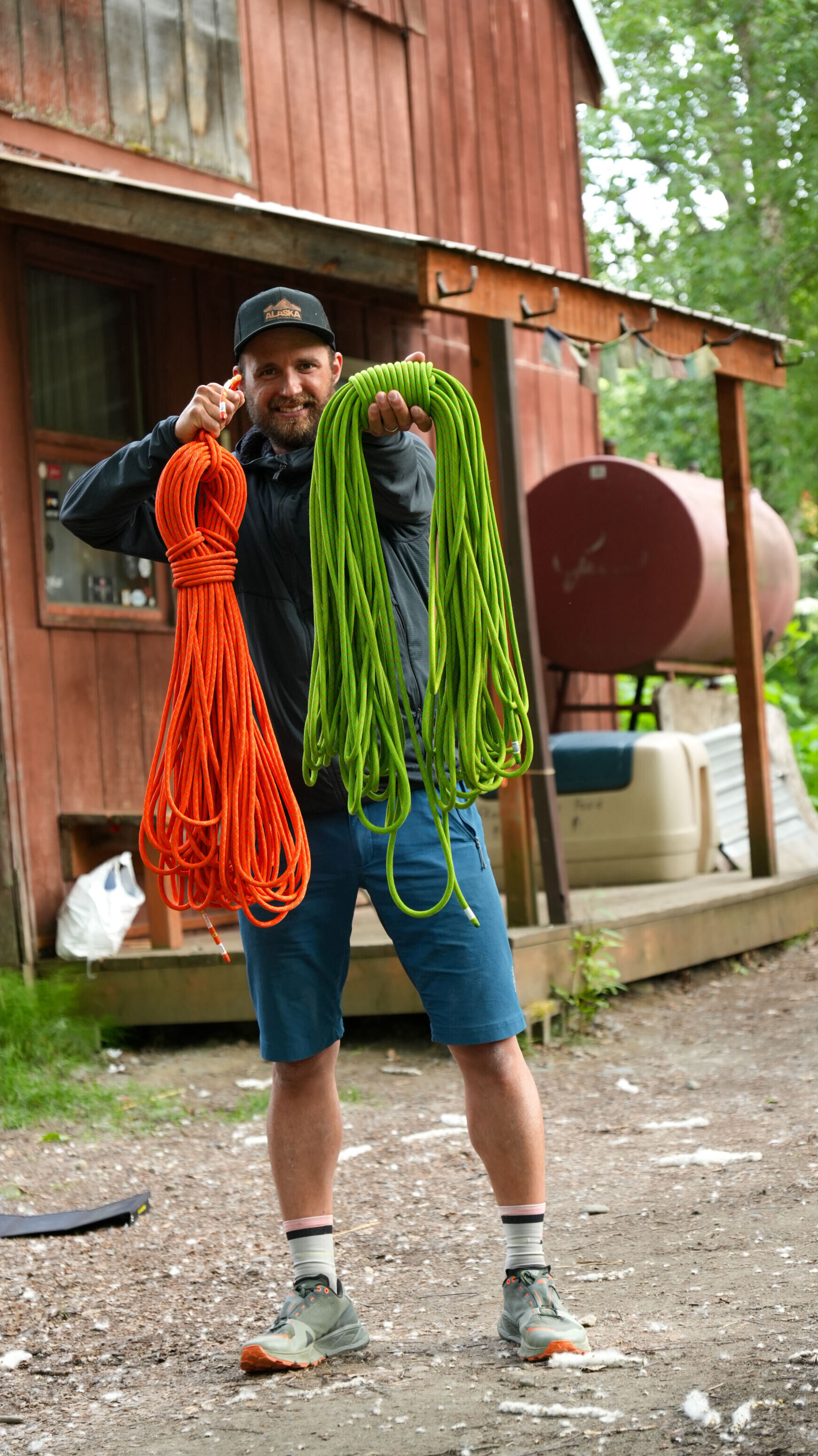
From the moment we arrived in Alaska, everything happened very quickly. The weather was on our side, so there was no reason to stay down below. Less than 24 hours after arriving in Anchorage and traveling to Talkeetna, we were sitting in a small plane heading for the Kahiltna Glacier. Goodbye civilization and comfort. Welcome adventure.
In the icy grip
There is nothing on the glacier. Just others who crave the summit. And our belongings. What we didn't bring, we won't have. You need to be prepared and not forget anything. Denali is not high, but its massiveness will amaze you. Especially the south face, which is more than 2.5 kilometers high. The course of the expedition is the same as on other mountains, starting with acclimatization and ending with the actual attempt to reach the summit. The path was well-trodden, as most people had already been here. On the glacier, the ropes rest quietly in backpacks, up to C4 at 4,300 meters, where we set up our base camp for this year. We knew that we would want to descend below the south face via the West Rib. This meant one day of preparation for us, during which we also checked the weather. We have to go! While the window is open. The plan is two days of ascent, four days on the face, and then a descent back down the normal route.
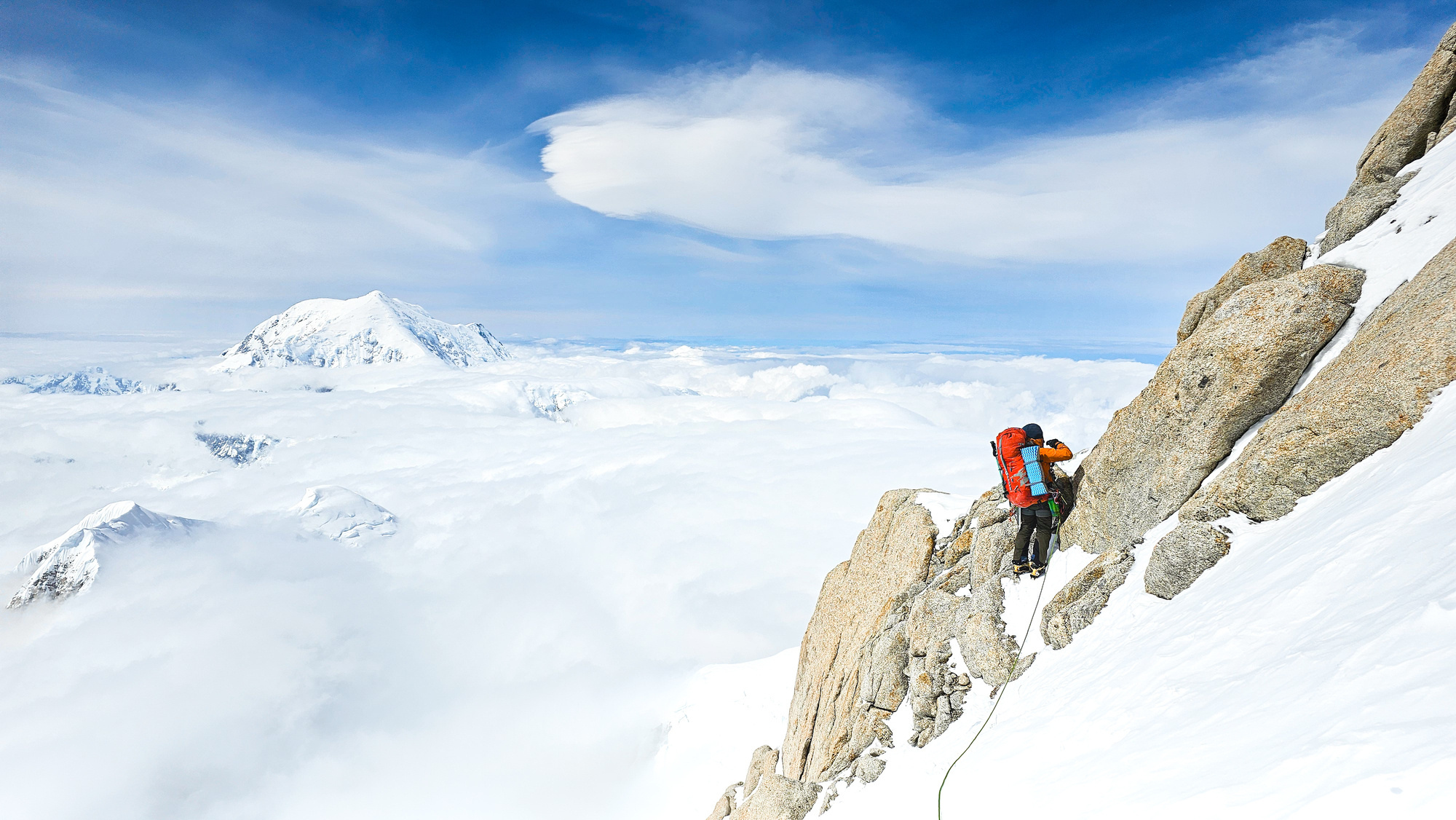
We Got Lucky
I would describe the approach to the wall itself as terrifying. Something I never want to repeat in my life. After West Rib, we climbed freely without ropes, then there was a turn and we had to descend steeply down the so-called Seattle Ramp to the south wall of the Valley of Death. One rope in our backpacks, the other connecting us like an umbilical cord. We completed most of the descent on all fours. We couldn't avoid falling into crevasses or from seracs. Finally, in the Valley of Death, we narrowly missed a massive avalanche when an ice block broke off somewhere a kilometer above us and flew through the wall. We were only hit by the edge and a wave of talc. We were lucky! The aftermath was a body shaking from stress. Let's get out of here fast! Now I know why so many people are discouraged by this.
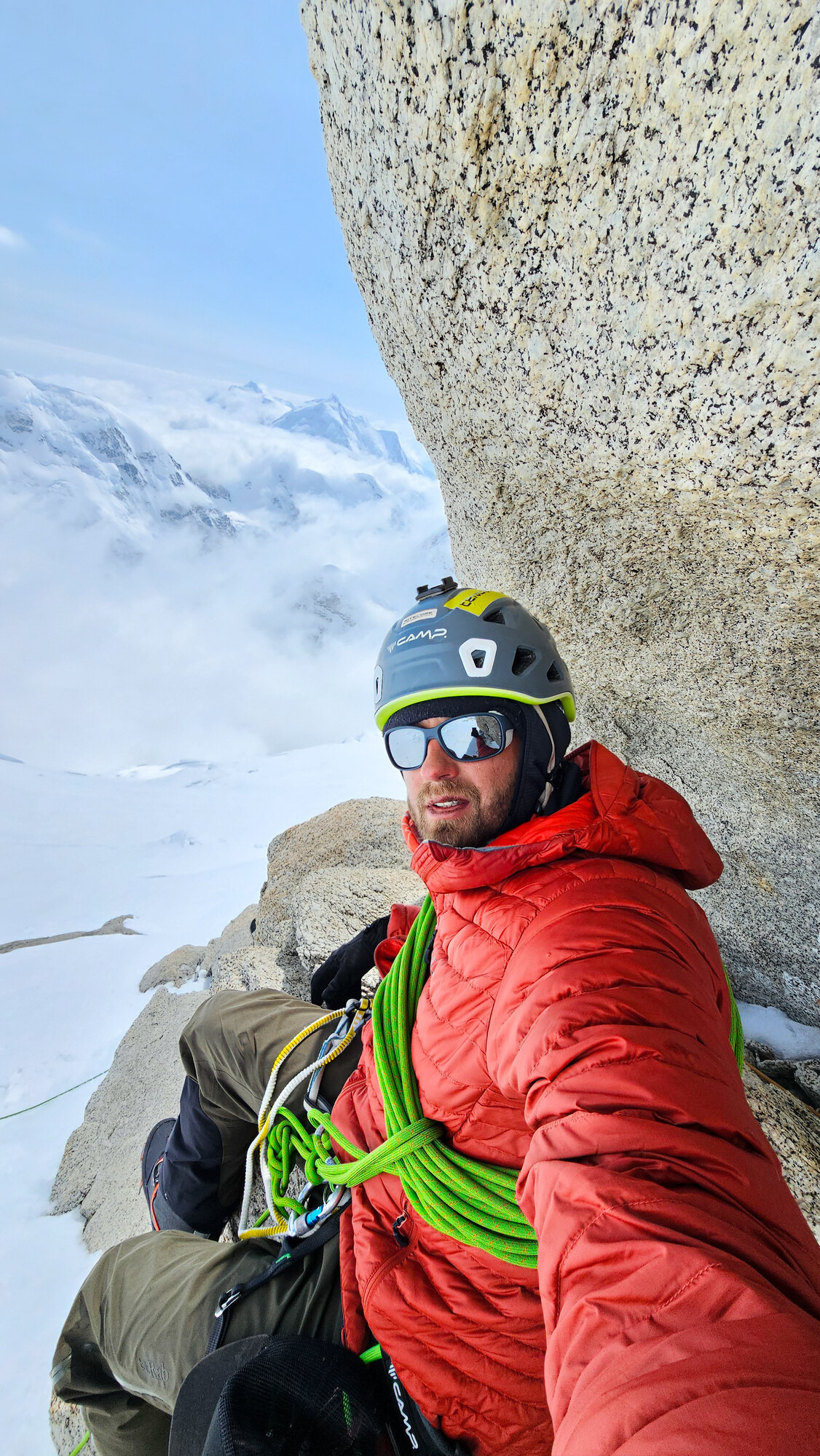
We are on the wall. Finally!
A mix of vertical ice, deep snow, clean rock, and a ridge as sharp as a razor. We experience everything from relatively comfortable bivouacs to those where we huddle on narrow ledges that we had to carve out of extremely hard ice. In the end, we are slowed down by a storm that traps us at around 5,200 meters. The Japanese couloir is something like an alpine north face. A long, narrow gully that opens into a ridge. I didn't even count the length, but we spent the whole day in it. This was followed by the most difficult rock passage – a chimney that opened into the dreaded Cowboy Arete. An ice ridge as sharp as a razor. Hard blue ice with snow that doesn't stick to it. We secured some parts, elsewhere the protection was just for peace of mind. Behind it, however, was a nice place to bivouac, and above it an overhanging glacier and the first rock barrier (Rock band). A green rope between us, an orange one hidden in our backpacks in case of emergency. We started climbing with one, and so we continue. Above the first rock barrier is the second. Both combine mixed climbing through various gullies, slabs, and blocks interwoven between them. Then "just climb to the top." It was during this final climb, with 1,200 meters of climbing still ahead of us, that a storm caught us. An emergency bivouac, in which we are crammed like sardines in a can. Frozen into ice cubes, as snow constantly covers us from all sides, even though we are sheltered under a rock overhang. I am happy for the new ropes. Mine would be as hard as concrete by now. It's clear that these conditions are perfect for them. Only we are suffering. The next day, the weather allows us to climb only 300 meters on steep slopes, where deep unstable snow alternates with firn and ice slabs. The rope is just a placebo. Hopefully, we'll reach the summit the next day. We are out of food.
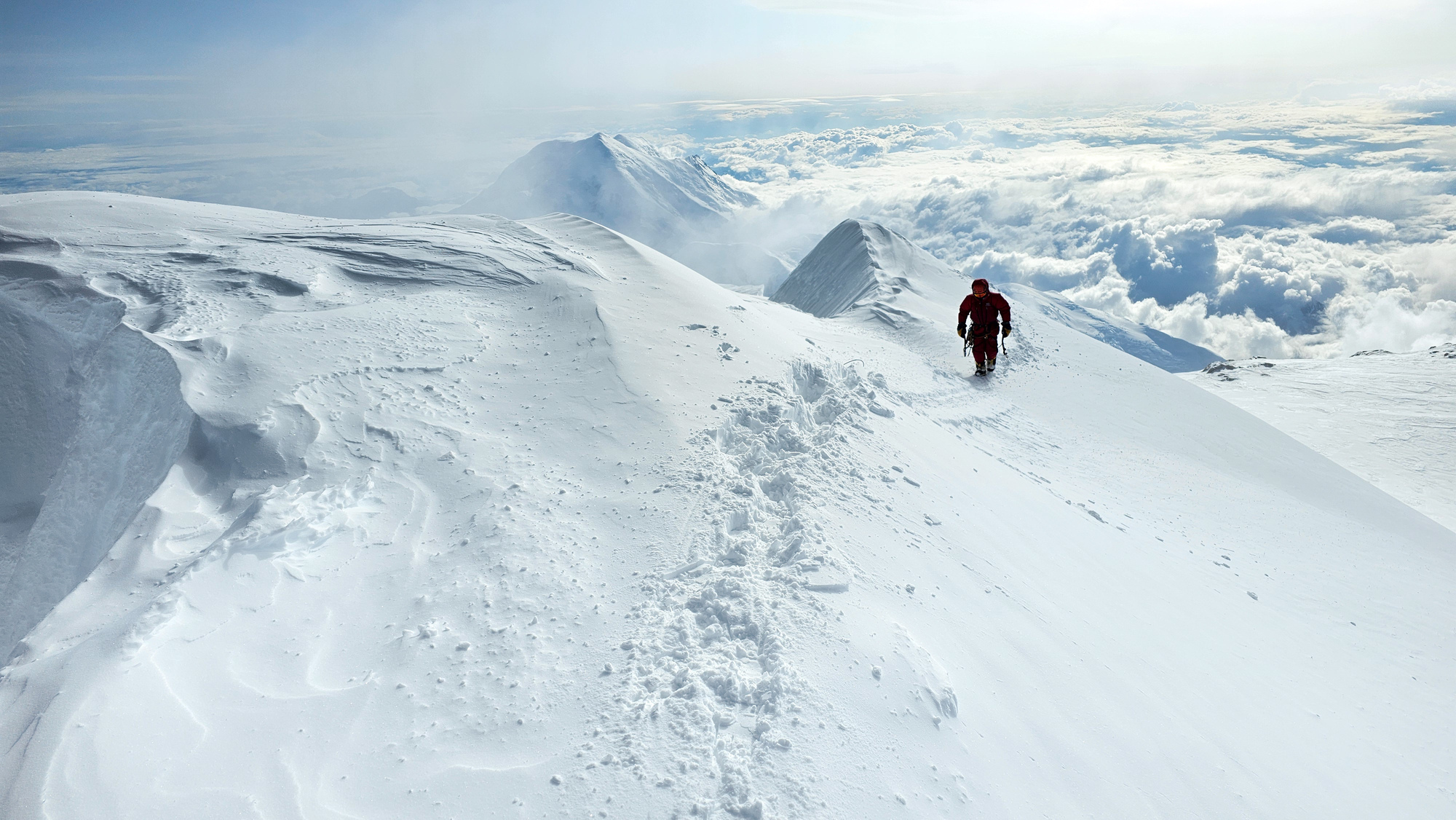
The climb itself once again proved to be a steep rock barrier, which we climbed through snow gullies to Kahilta Horn. From there, it was just a stone's throw to the summit. A moment of frozen joy when the wind died down. We packed the green rope into our backpacks for the descent. We had had enough, but we had to get down. The weather is playing with us like a cat with a mouse. The supercell that has formed in the meantime hits us with full force. Extremely strong wind, snowfall, zero visibility. The rope covers our backs as we traverse above C5, securing ourselves with anchors. After midnight, we finally arrive. We dig a hole, pitch the tent, and crawl inside. Tomorrow, we'll finally get a proper meal. And so it was. Only it was late in the evening. I already knew the descent from last year, but the fresh snow turned it into hell. Avalanches fly around, visibility is zero. I can only see the tent after the terrain levels out. Until then, I just thought I was going in the right direction. But finally, we made it! In the following days, Denali was covered with snow. The pleasant descent turned into a struggle, but we successfully completed it. How else but with a hearty burger down in Talkeetna.
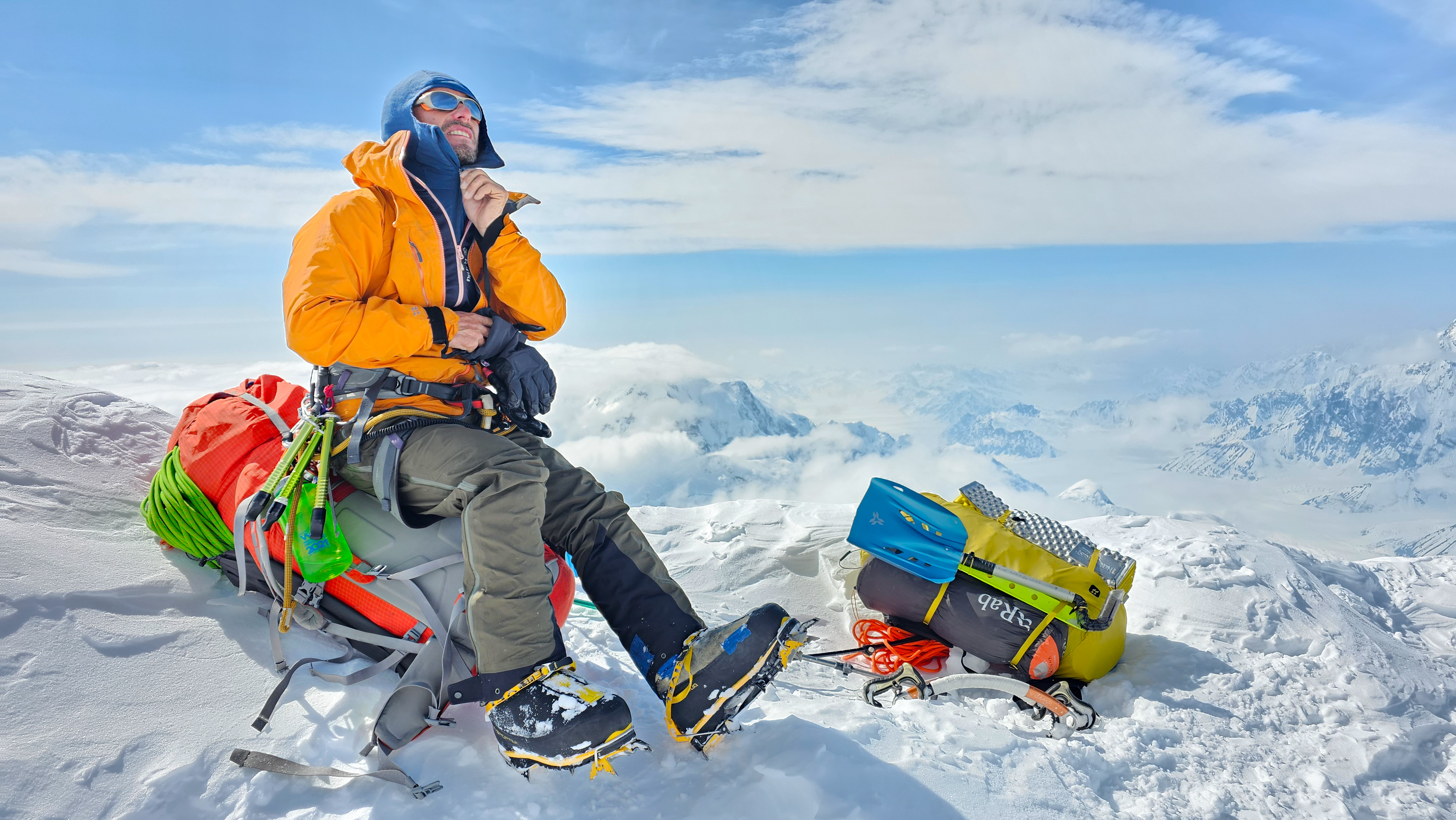
A total of three weeks, including six days on the wall. From the start at the base of the wall to the return to C4, it took a total of nine days. It was challenging, intense, but beautiful! And I am very grateful to Tendon for equipping us with ropes that we could rely on even in the harshest conditions. Not only were they our lifeline, but they also kept us safe on the wall when we huddled in our tent. We managed to climb Denali via the south face of the Cassin Ridge, probably the only and last Czech footprint left by climber Martin Minařík 30 years ago.
Thank you!
Author of text and photos: Lukáš Jasenský



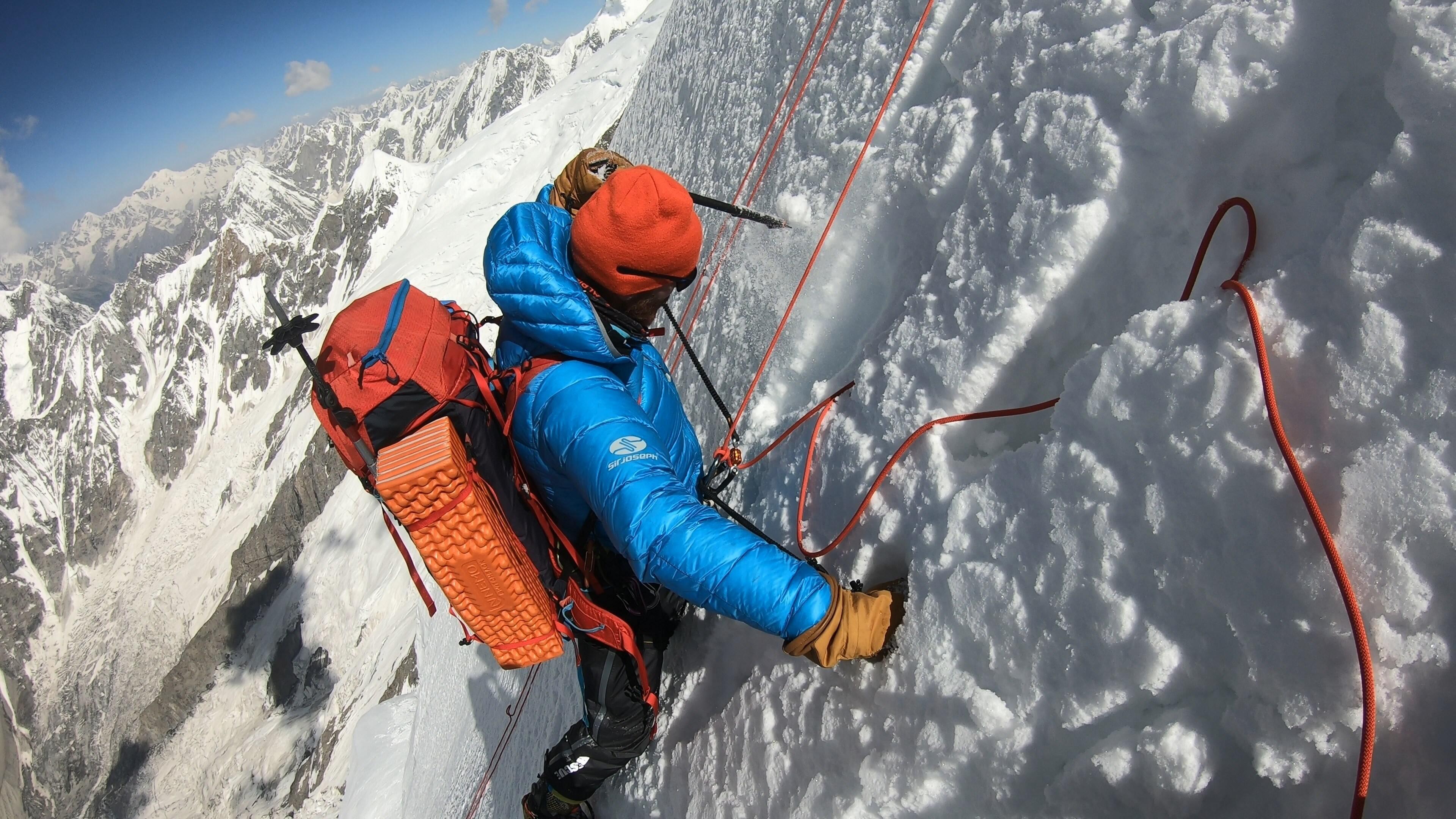
Comments (0)
There is no comment on this article.
Comments can only be inserted by logged-in user.